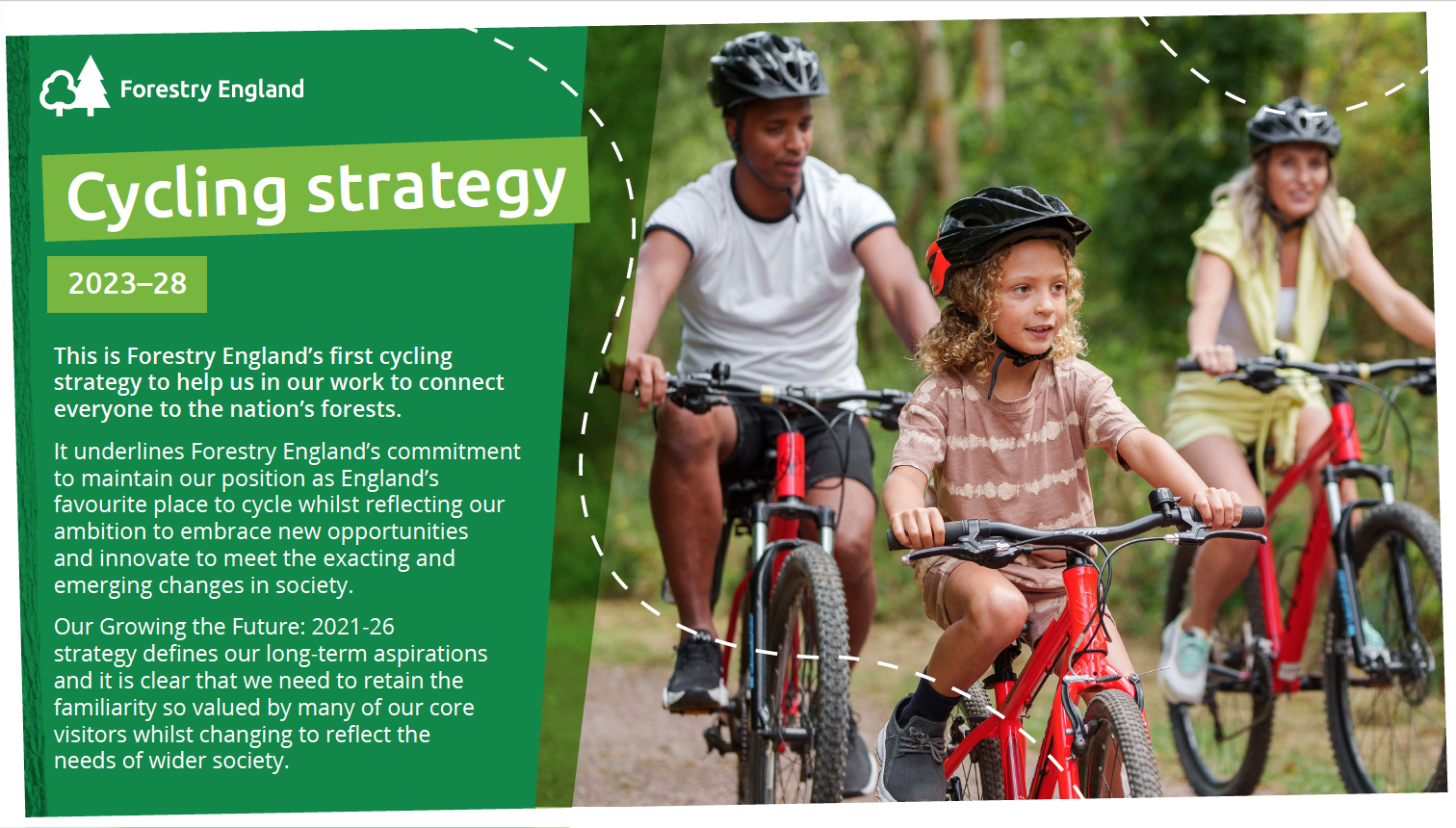Forestry England published its first Cycling Strategy a few weeks ago. Big organisations need this sort of thing so that everyone knows what they should – or shouldn’t – be spending their money on, and what their goals are. On first reading, I got pretty grumpy about it – there’s a lot of words and graphics giving not very much to the world of mountain biking. On second and third readings, and digging through the data that’s been used to support its creation, I got a bit more grumpy about it. So I went straight to the horse’s mouth and had a chat with Dan Cook, Forestry England’s Cycling and Infrastructure Manager, about it, and then had a think and asked some follow-up questions. Am I less grumpy about it now? Maybe… or maybe I’ve just redirected my grumpiness towards the powers that be, the state of the world, and the fact the we can’t have nice things… Come on a quick walk through the Cycling Strategy, the issues as I see them – and decide for yourselves what future mountain biking has in England’s forests.
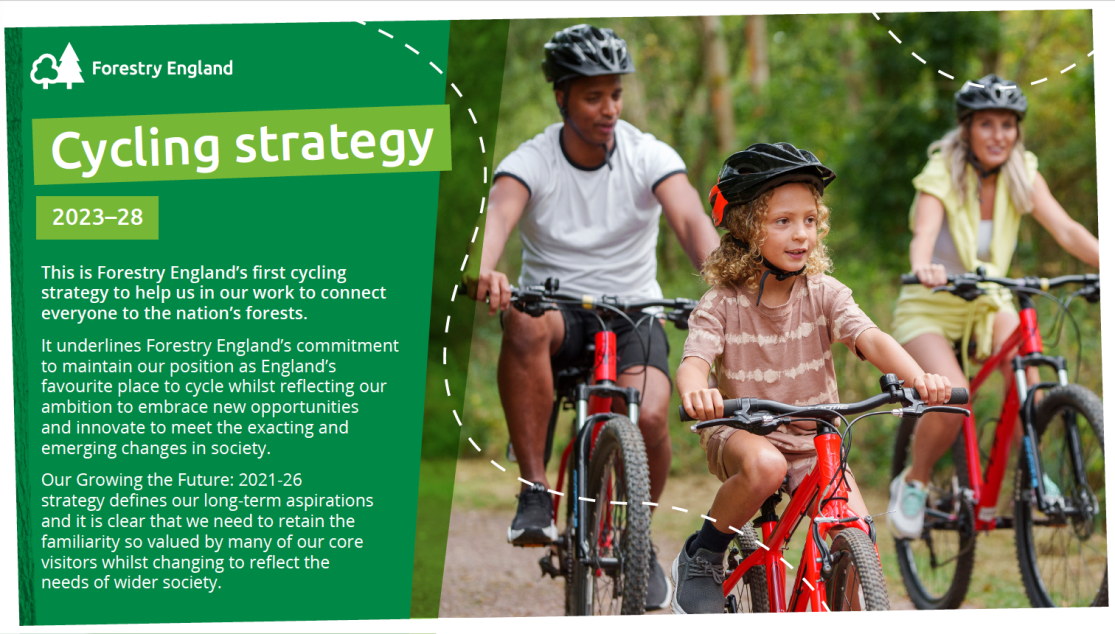
What’s In
According to the Strategy, there are 1,300km of purpose built and waymarked cycle trails in England’s forests. This includes everything from Green graded gravel paths and family trails, through to the enthusiast-level Red and Black trails. While there are many forests that Forestry England says you can ride in (more on that in a bit), there are only five ‘bike parks’. Forestry England considers locations to be bike parks where there are ‘multiple gravity oriented lines, progressive trail grades, effective signage, appropriate access and parking.’ Forest of Dean and Stile Cop are free to access, but others pay-to-play locations, while Aston Hill and Watchmoor are currently closed pending redevelopment and maintenance. While home to large trail networks, locations like Dalby and Sherwood Forest aren’t counted as ‘bike parks’ by Forestry England.
“In 2022… we had 285 million visits across Forestry England sites of which 23% are cycling, so that gives us over 65 million cycling based visits per year, so it’s pretty core to the offer.” – Dan Cook, Forestry England’s Cycling and Infrastructure Manager
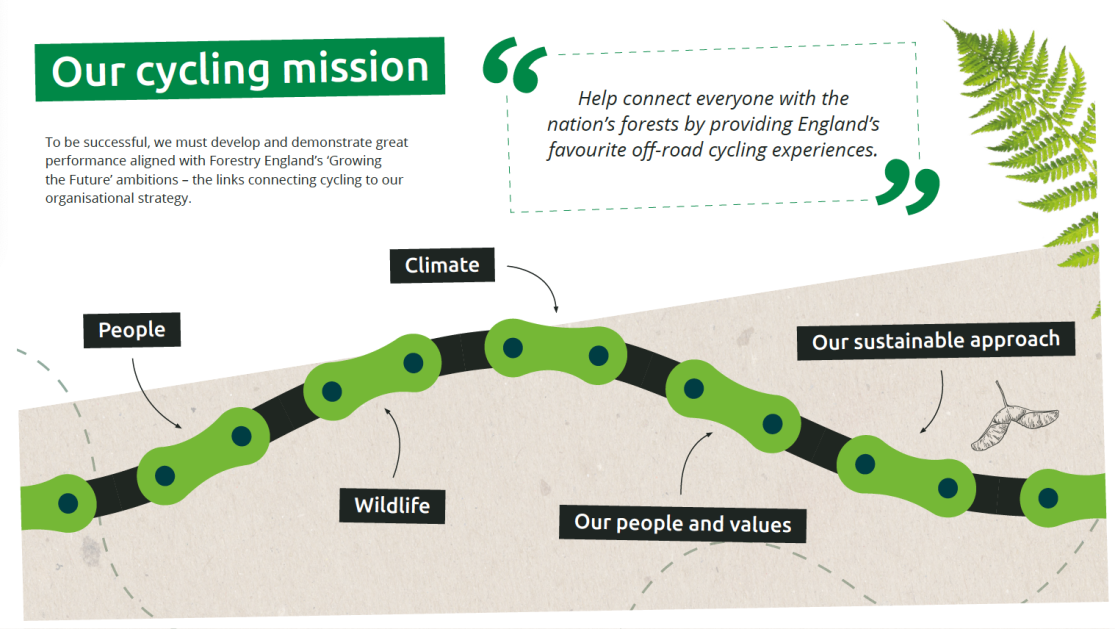
Forestry England is an arm’s length government organisation, so while it does get some funding from the taxpayer, that’s only about 10% of its income. For the rest of its operating costs, it needs to generate the funds itself, or make applications for funding pots as they’re available. For example, many of the current trail works being undertaken are as a result of recovery funding from Storm Arwen, and ‘Access For All’ funding – which is funding aimed at getting new people out into the forests and countryside.
Latest Singletrack Merch
Buying and wearing our sustainable merch is another great way to support Singletrack
Herein lies much of the reason behind why the Cycle Strategy is so focussed on easy trails – the greens and blues. These are the trails that it’s considered will meet the Access For All goals. Think families heading to the woods for a day out, maybe trying a bike ride for the first time, or getting out of the city for occasional weekends. Accessible trails for adaptive bikes, balance bike friendly routes, or trails you could tow a child in a trailer around.
The Strategy sets out four themes:
- Priority Audiences
- Communities
- Partnerships
- Sustainability and Currency
“Bigger projects, we are absolutely at the behest of coming across the right funding in the right place with the right time frames that meet our strategic ambitions and whilst at the same time, whatever we put in would meet the brief of the funding. So that does fall back to the government principles really around trying to create social impact, healthier society with more wellbeing focus, better mental health, all the factors that are driven by going into green and blue space, being a bit more active, all those bits and pieces… I see the future of the more of the higher grades, if you like, the reds… the blacks, the double blacks, being driven primarily by volunteer groups…they have the potential to access small scale funding, whether that is Pay Dirt or Soil Searching or some other local funding…the big government finance is likely to impact on the green and blue trails, and the volunteer groups and community groups are likely to impact on the… higher grade trails.” – Dan Cook, Forestry England’s Cycling and Infrastructure Manager
As well as any conditions attached to funding, all Forestry England’s activities will need to further one or more of these themes. It’s clear that climate change and sustainability are a big part of their considerations, and while cycling as transport is part of the solution to this – and leisure cycling can be a gateway to that – mountain biking tracks don’t necessarily serve that goal. In fact, built wrong, or in the wrong place, and there can be contributions to erosion that are downright negative. Yes, in the scheme of cars, roads, shopping centres and fast fashion, mountain biking is ‘better’ for the environment than, say, shopping as a leisure activity – but it doesn’t necessarily mean it’s ‘good’ for a forest.
On the flip side, are mountain bikers good for Forestry England? Well, maybe, a little bit. In terms of wider community benefits, the Strategy notes that visitors on bikes typically contribute around £56.89 on site and locally. But unless there’s a cafe or bike shop, it’s really only the parking fees that we’re contributing to Forestry England rather than the community. Forestry England doesn’t collect information on who is paying for parking, so it’s not possible to see which user group is contributing more.
“The annual revenue from car parking is around £10 million. We don’t hold any information on the visitor profile of this spend.” – Forestry England Spokesperson
Of course, dog walkers pay the same parking fees but don’t also require (expensive) bike trails needing (expensive) maintenance. So, as a commercial prospect, there would need to be plenty of us spending money to make the equation stack up, and even if we did it’s not clear that the monitoring systems are in place to tell which user groups are bringing in money. Plus, all income goes into a single big pot, to be redistributed as Forestry England sees necessary – paying for your parking at a local spot doesn’t mean that money is going back into the trails – or bins, or toilets or whatever – at that location.
“Car parking fees supports the maintenance of visitor facilities, such as walking and cycling trails, play equipment, toilets and other infrastructure ensuring that the nation’s forests are accessible and welcoming to everyone. This income also helps us make the forests become more resilient to climate change. We make the money we need from a variety of sources and spend it where and how we think best. The money spent on trail maintenance changes over time and place-to-place.” – Forestry England Spokesperson
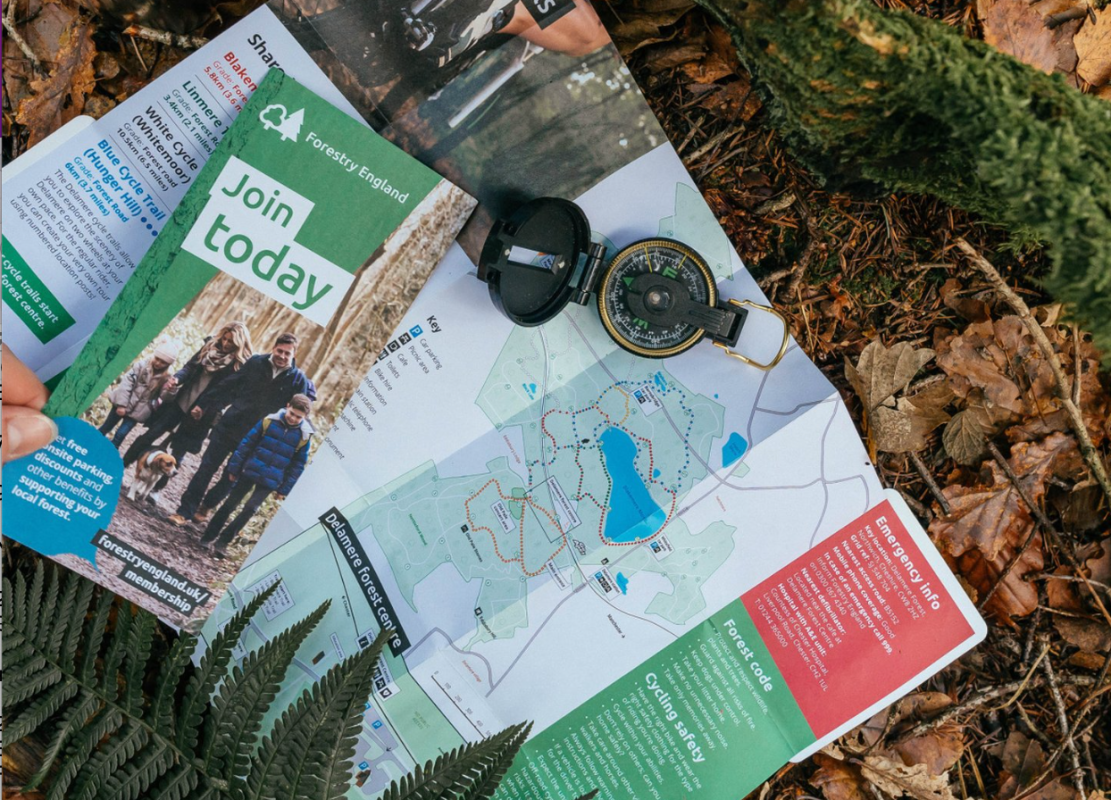
Forestry England points to its membership scheme as a way to support its functions. For £94 a year you get free parking at all its sites, plus some other benefits. They suggest that if more mountain bikers were members, then mountain bikers would be seen as more important, although at present there’s no system to monitor or capture information on why people buy a membership.
“We currently aren’t able to ask demographic or psychographic questions during the online checkout process with our current software capabilities, which are shared with ticket sales. However, we will be surveying our members during their membership year and will be making adjustments to the checkout process in 2025 to allow us to capture information about the motivations of new members joining us.” – Forestry England Spokesperson
What’s Out – Progression
I do think there are gaps in the provision. For one thing, it’s a five-year strategy, and if it works in the early years to get families out on the blue and green trails, you might imagine that some of those families might like somewhere to progress to – the reds and blacks, perhaps. The other thing is that the ‘drive to your ride location’ model is excluding lots of people who can’t drive out to a trail centre. We know from all the (unauthorised) trails that people built in lockdown that there is demand for jumps in the woods and technical trails within riding distance from rural and urban locations – at the moment, the Access For All funding misses these groups of riders (because they’re already riding) and perpetuates the need for unauthorised trails in places where they’re not being built and managed.
In further support of their focus on green trails, Forestry England says that the data shows that people want moderate and easy trails. However, one of the studies they rely on is a survey of ebike users. Given how much ebikes are restricted as to where you can take them by where you can lift them, I’m not totally persuaded that the questions in the survey identify where people would want to ride, given the choice. Plus, ebike technology has moved on, meaning that lighter bikes that you can lift over obstacles, or ride down technical trails, are more easily available. The data from that survey does suggest that riders there want longer options, and more technical climbs that can be ridden on an ebike (which both sound like things that some of the earliest trail centres, like Afan in Wales, already offer). I suspect it’s an area that’s worthy of revisiting.
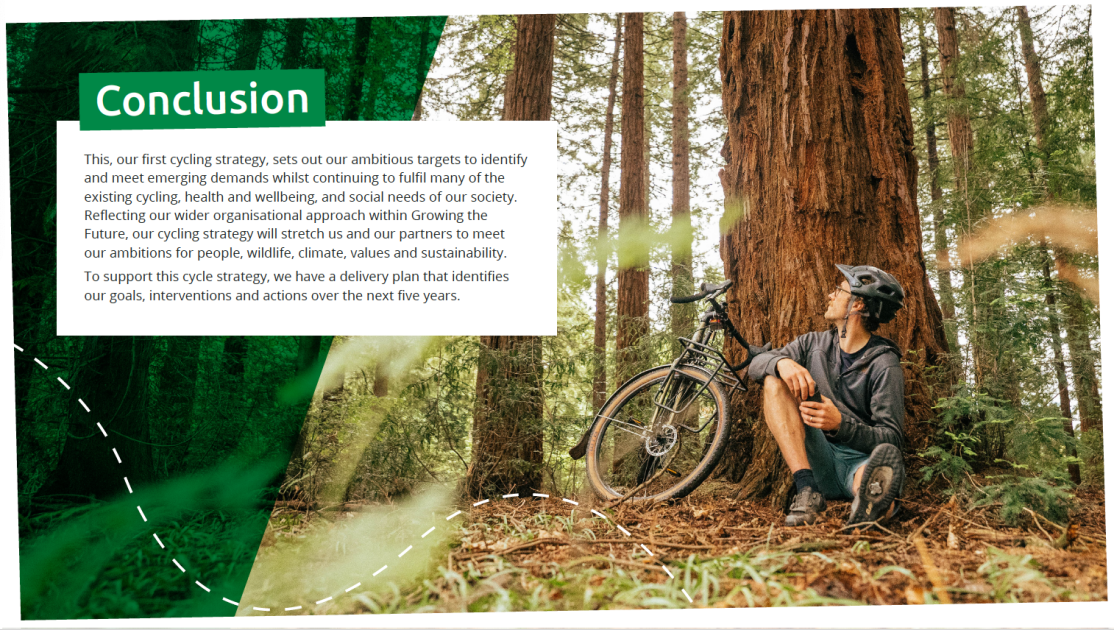
In fact, I’m not persuaded that the data being cited does support their Strategy. Take this for example – they state that Cycling UK’s ‘Rides of Way’ research found that people valued five factors most about their trails:
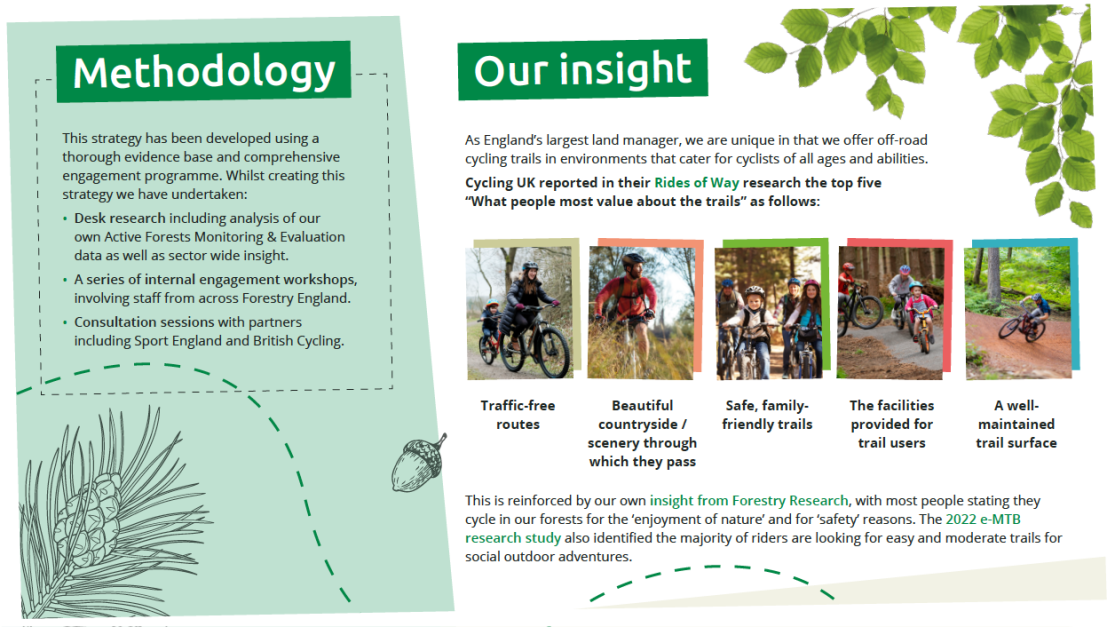
I’ve had a look, and I simply can’t find any reference to ‘facilities provided for trail users’ being valued. In fact, the report says:
‘Our off-roaders set store on cafes and toilets, but not quite so much: just over 30% rated each of them as ‘important’, but fewer than one in ten rated either facility as ‘very important’. One respondent commented, though, that his wife’s priorities at a trail centre are very different to his and that a “clean toilet and cafe are a must!” This is reflected in the survey responses from women.‘ – Cycling UK’s ‘Rides of Way’
Similarly, while the report does pass comment on unridable or damaged surfaces, it specifically recognises the differences in user demands. I can’t see how ‘A well-maintained trail surface’ can be placed as one of the top five priorities on the basis of the Cycling UK report.
‘It was also clear that not all off-road cyclists want the same thing out of the network: some, for example, value smoothly surfaced bridleways, while those who like a technical challenge despair of ‘sanitisation’.‘ – Cycling UK’s ‘Rides of Way’
In fact, the Cycling UK report does identify ‘Technical Challenge’ as a top motivation for off-road riding. Not something mentioned by Forestry England.

Furthermore, the Cycling UK report lists family routes as being less preferred than singletrack or technical trails.
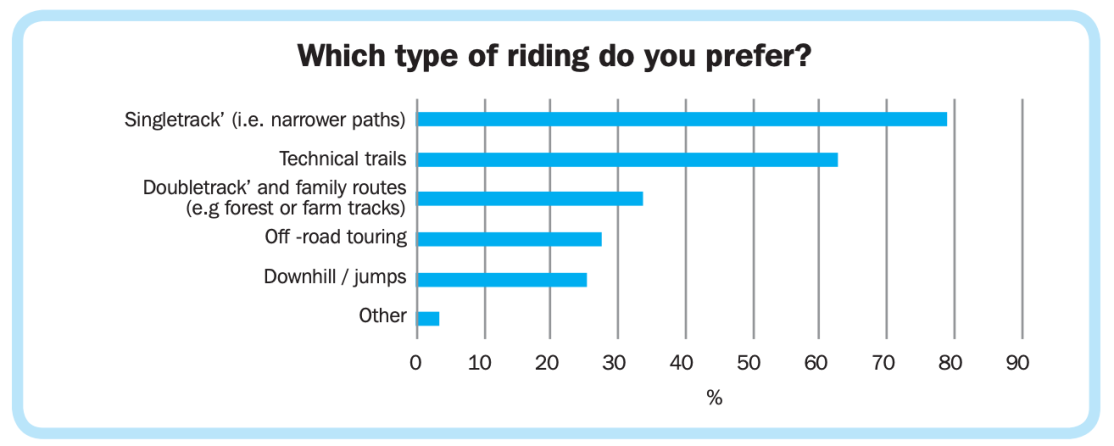
Having already stated that traffic-free routes are valued (ie you’re safe from being run over), the inclusion of ‘safe family-friendly trails’ as a top value seems to me to be a) unsupported by the data, and b) to suggest a different sort of ‘safe’ – ie trails you’re unlikely to injure yourself on. I can’t see anything in the data that supports the posited five ‘top values’, and I’m not convinced that the focus on easy trails is supported by the data.
What’s Out – Unauthorised Trails
Forestry England is currently working on a pilot project to see how local groups can reach formal agreements to take care of trails – making the unauthorised trails legit. They’re got a pretty strongly worded approach to unauthorised trails, and this pilot project should be a step in the right direction towards making it easier and more consistent to get agreements with them to build and adopt trails. This is hopefully a good thing, as until now voluntary groups have found it difficult and inconsistent when trying to work with different regions. We can expect to hear more about these proposals in early 2025, and as alluded to above, this is where Forestry England sees that the more advanced trails are likely to come from in the future. But, without funding, it’s reliant on volunteers and there being enough people that want to get organised. That’s probably a bit of a stretch for your average teenage squad on bikes. This group of riders remains largely unserved by current funding streams or, as far as I can tell, the Forestry England Strategy.
“We have a system in place to manage unauthorised trails that priorities visitor safety, especially in areas where mountain bikers might come across other types of users. We also consider many other factors like ecology, heritage, and sensitive areas. Unauthorised trails we consider the highest risk will be closed as a priority.” – Forestry England Spokesperson
What’s Out – MTB Racing
The Strategy provides for events as part of commercial partnerships that promote Forestry England priorities, but it seems pretty clear that there is little appetite for anything beyond gravel racing, family events, and those that can take place on the existing trails with minimum impact. There is a new downhill track being built at Kielder which is being built with the aim of being suitable for events. But enduro racers want the kind of hand built trails that Forestry England isn’t willing to allow – they don’t want the maintenance burden (or risk of not maintaining them).
“It’s inevitably incredibly complicated because as soon as someone builds a trail then we have a responsibility to maintain it, inspect it, make sure that it’s safe – whether it’s way marked or not. An enduro event might last a weekend but its legacy will last a lifetime and that is quite a challenge really.”
“There are other events that we’re looking at… there’s lots of gravel events that come through our land and they are low impact and generally use the existing infrastructure, so that’s relatively easy for us to deal with. But something that is very specific and needs setting up for a week for an enduro event, that would need a much bigger piece of work than just the event itself. It would need a volunteer group to be looking after it, it would need time and capacity in the regional team to support that and make sure that it’s part of their existing infrastructure offer.” – Dan Cook, Forestry England’s Cycling and Infrastructure Manager

And how will this all happen?
Erm… The Strategy says that there is an accompanying five year Delivery Plan, however after a bit of to-ing and fro-ing I’ve been told that this is a working and live document, so it’s not available publicly. So we don’t actually know much of what is being done. Dan Cook said he’ll include Singletrack in the circulation list for consultations, and he’s working on improving the information available via their website. But, my impression is that if you want to know what’s planned for your local forest, you need to be pretty proactive, or keep an eye on any noticeboards in the area. Finding out what’s planned doesn’t have a neat portal for you to go to – and in the absence of a public Delivery Plan, this feels like quite a hole from a public scrutiny or awareness perspective.
What Future For Mountain Biking?
Elsewhere in the world – and even in the UK – mountain biking trails have been seen not just as a resource for local people, but as a new way of deriving income from the land, through tourism. Building trails that bring visitors to the area to stay in hotels, eat in cafes and so on has become a major focus for some areas. Yet for Forestry England, much of its work is focussed on day trippers. That said, there are some pockets of collaboration with tourism funds:
“We collaborate with partners like Forest Holidays and local tourist boards, such as Visit Dean Wye and the Lake District National Park, to promote our forests to tourists. We also offer our own camping options through Forestry England Camping. Sherwood Pines is a great example where we work with partners like Visit Nottinghamshire and Forest Holidays to promote it as an ideal destination for mountain biking holidays. Additionally, we provide our own camping facilities there.” – Forestry England Spokesperson
Sherwood Pines is nice enough, but ‘an ideal destination for mountain biking holidays’ might be a bit of a stretch. Again, it’s much more of a family/entry level vibe. An ‘ideal destination for an active family holiday’, perhaps. When it comes to ‘mountain biking holidays’, some of larger locations like Dalby, or Forest of Dean, where there are enough trails to support a weekend of exploration, would seem suitable. But locations that currently have the kind of advanced trails that might attract a weekend tripper seem few and far between. Descend in Hamsterley, perhaps, falls into that category. Perhaps, somewhat ironically, the unauthorised trails – built because they’re what riders really want – hold the key to further tourism money.

Ultimately, the whole thing leaves me rather depressed. We know that riding our bikes in the woods is great – whether that’s a green trail, or a double black. The picture painted by the Strategy seems to me to be one of day-trippers, largely piling into their cars for a few hours of pedalling, before driving home. These are the parking and cake paying customers that Forestry England needs to support its recreation offer. The local rider who pedals from home and returns back home for a slice toast and a cup of tea in their own kitchen isn’t part of that income generation. Neither is the kid that digs what they want to ride in their local woods – perhaps because they can’t get to any of the official trails. Without investment in higher grade trails, there won’t be the weekend’s worth of riding to be had for a visitor from further away – who also needs a bed for the night, a breakfast bap, and a hot meal at the end of the day.
There’s been an expectation that our public land is looked after by our governments, and therefor by our taxes, and so we should expect to access our public land in ways that we want to. The relatively limited scope of Forestry England’s Cycling Strategy – and the current threatened closures of facilities and loss of staff in Natural Resources Wales – illustrates that this equation isn’t working. Anyone that’s tried to engage with their Local Authority over a bridleway repair or footpath re-designation knows that resources there are similarly stretched. We know that there are social benefits to be had, but measuring them and tallying them up against lines of investment in a spreadsheet is all but impossible. How does the GP’s reduction in costs treating patients with obesity, or heart disease, or depression get attributed to the nearby availability of a mountain bike trail paid for by a line in a spreadsheet in the office of Forestry England? It just can’t happen at the kind of granularity that public services – or arms length government organisations – are being expected to demonstrate.
Outside is not free, if we want trails – and to some extent, unless we’re riding fat bikes on the beach, we all do. Someone needs to maintain them, or build them in the first place, and in the absence of an army of volunteers, that costs money. It’s important for those that can’t pay to play that there should be plenty of outdoors that is free at the point of use. So who should – or can – pay?
Let’s give the last word on this to Robin Grant, of the UK MTB Trail Alliance – the closest thing we have right now to a representative body for mountain bikers:
“As UK citizens and taxpayers, Forestry England are managing our land on our behalf, and it’s definite progress that we now have a public cycling strategy from FE, and a bit more democratic oversight as a result.
We’re also encouraged by the news of a pilot project to grasp the opportunity of FE reaching agreement with volunteer groups to take care of community-built trails, and we look forward to engaging with them on this, and to details of the project being made public.
However, it’s disheartening that key strands of the strategy have been based on unreliable and misleading data, and that when developing the strategy, FE failed to consult with any groups representing the volunteers who help to build and maintain trails on FE land, or the riders who ride them. We would have liked to have seen more in the strategy about how FE are going to tackle their internal red tape, which is currently hindering volunteer groups from helping to maintain FE’s network of trails.
We also would have expected the strategy to give some indication of the overall budget allocated to trails and how that money was going to be spent. If 23% of FE’s visits are for cycling, and they make £10m a year from parking, it’s clear that £2m+ of that should be going back into trails. We should know how much of this is actually being spent on trails, and what effort is being made to ensure that wherever you are in England, you have local access to a range of trails that not only encourage people from all backgrounds into our sport, but also allow them to progress. Social impact will not be sustained on green and blue trails alone. It’s clearly in the public interest that FE publish their delivery plan – without that, it’s impossible to provide the scrutiny a strategy of this importance needs.” – Robin Grant, UK MTB Trail Alliance
